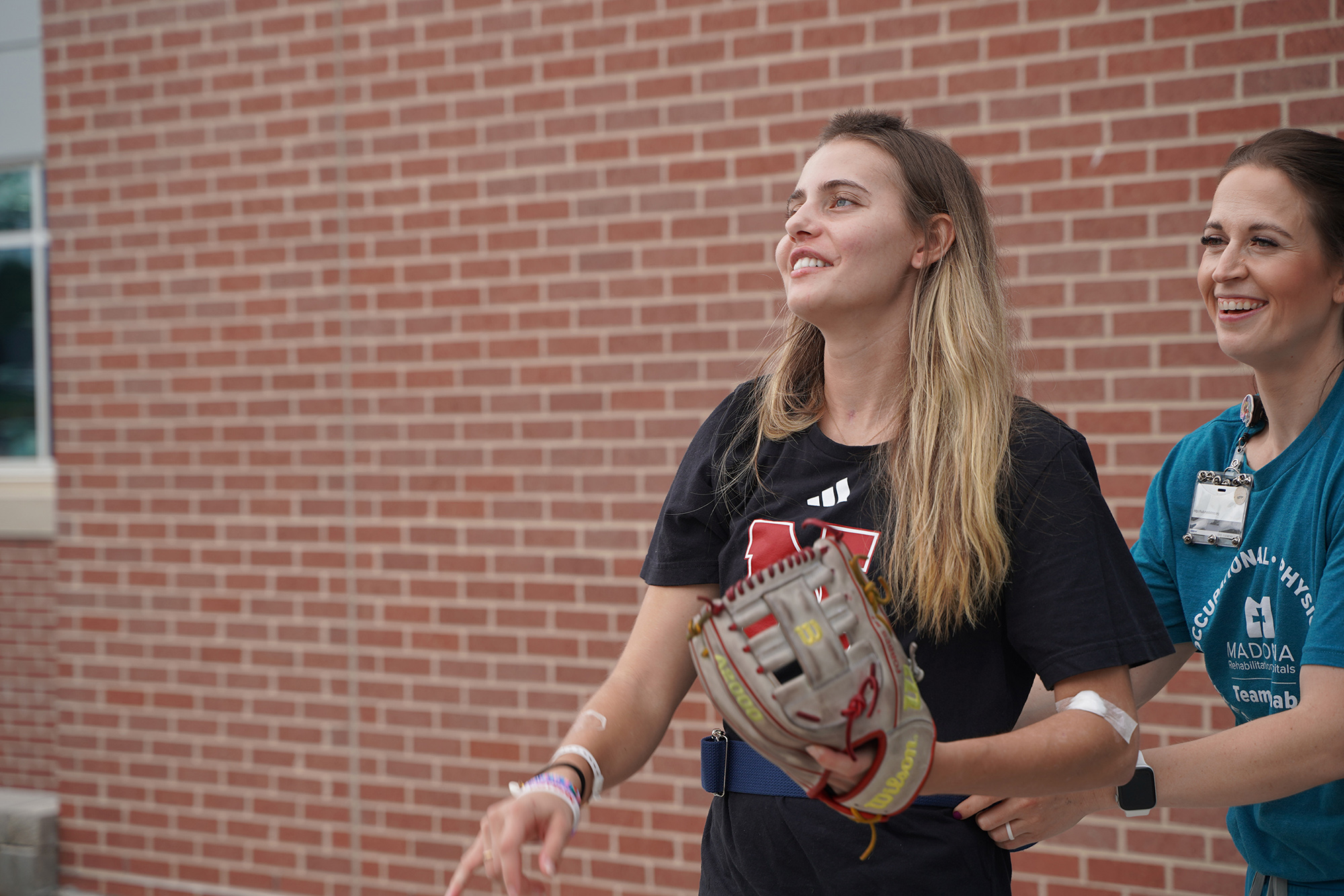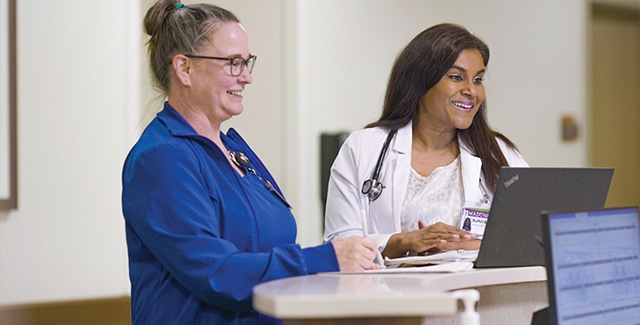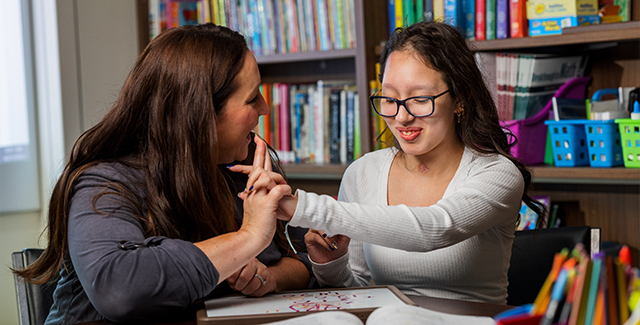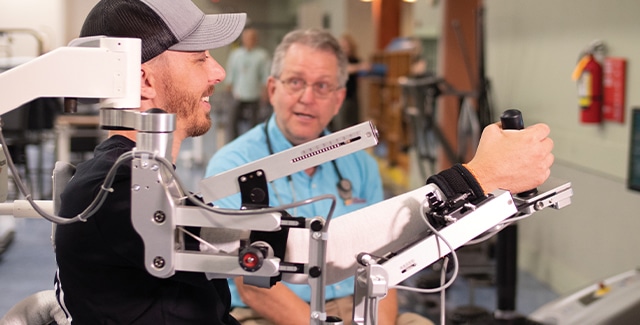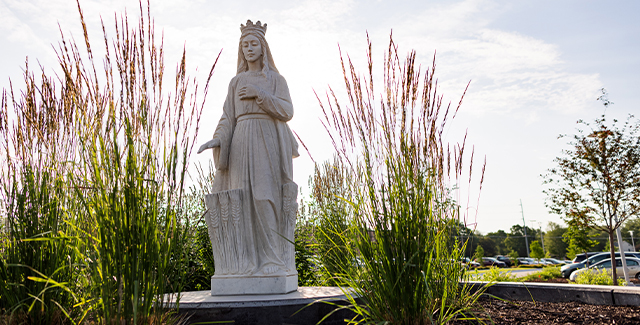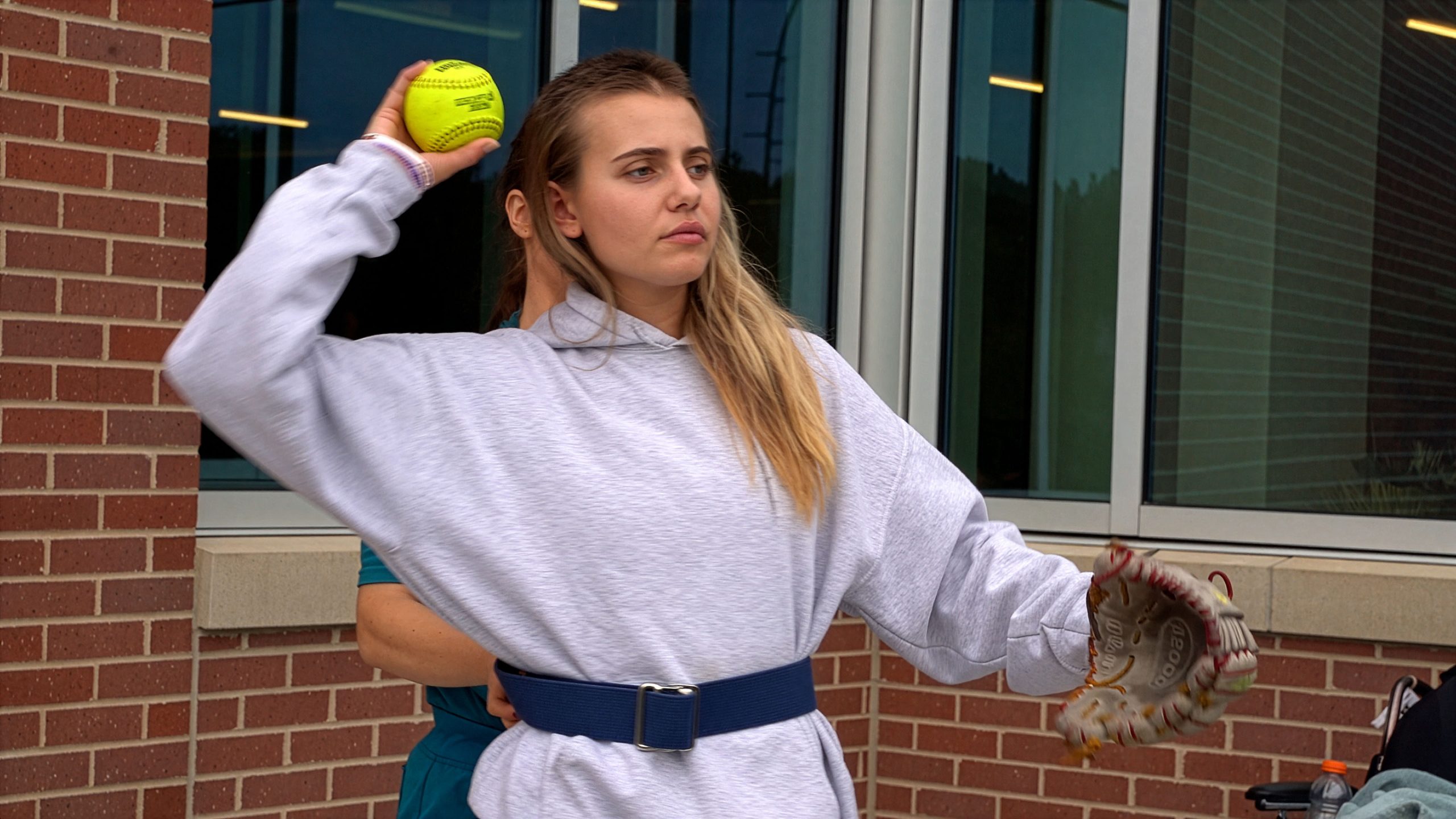Kendall Forbes is used to pushing herself, on the softball field, in the classroom and even on the pageant stage as Ms. Kansas for America Strong. But when her world suddenly changed, those same lessons from the field of discipline, teamwork and perseverance became her playbook for recovery.
At 22-years-old, Kendall was thriving. A student at Pittsburg State University, she was balancing athletics, academics and community involvement with ease.
But on June 20, Kendall was returning home from her birthday celebration when her car was struck by a speeding truck outside Fort Scott, Kansas.
“She was pulling out of the (dog) boarder’s driveway and the driver came over a hill at an excessive speed and t-boned her,” Stephanie Forbes, Kendall’s mom, said. “She landed in a ditch and luckily, Alex (her boyfriend) was there until the helicopter arrived.”
Kendall was flown to the University of Kansas Medical Center, where doctors discovered multiple injuries, including broken ribs, a fractured pelvis, brain trauma and several lacerations.
Specialty Hospital: Medical Management & Simple Movement
When Kendall stabilized, she came to Madonna Rehabilitation Specialty Hospital, needing help with basic tasks.
“The Specialty Hospital offers a unique way for us to really hone in on some of those therapy pieces while we are dealing with big medical pieces,” Amanda Cool, MS OTR/L, a Madonna occupational therapist, said. “She wouldn’t have been able to tolerate the intensity of therapy on the rehabilitation hospital, so we were able to build up that tolerance on this level of care,”
“I couldn’t shower by myself,” Kendall said. “I had a feeding tube and a trach. I had to give a 5-to-10-minute heads up if I had to go to the bathroom because they had to put me in the sling.”
She was also confined by an external pelvic fixator that restricted her movement and caused constant discomfort.
“Pelvic fractures are some of the most painful fractures there are,” Cool said. “Your pelvis does so much for you in everything that you do. It’s in contact and moving and shaping the way that you move. So, finding ways to help her be able to progress with her mobility while still dealing with the fixator was a big part of that.”
For an athlete used to moving freely, being unable to control her own body was incredibly challenging. Kendall’s physician-led care team focused on helping her find safe and dignified ways to accomplish everyday tasks.
“It was really hard for her because she’s a high-achieving, high-performing athlete,” Cool said. “We started out using the lift and trying to find a way to position her that prevented the fixator from pressing into her legs and allow her to sit comfortably to take a shower, get dressed or use the bathroom.”
In addition to the pain and limited movement, Kendall faced significant weakness and coordination challenges.
“She initially had a lot of weakness in her upper extremities and poor coordination related to the fractures and the brain injury,” Cool said. “She’s a highly skilled athlete, so using activities that were familiar to her really helped incorporate those motor learning and memory pieces. She automatically has a motor plan for how to use both of her arms together, so it challenged her to hold a glove on one hand, throw and catch with the other and force that bilateral integration.”
That simple game of catch meant more than just movement, it represented a return to identity. The athlete was back in motion, using the same focus and coordination that had driven her for years.
Through it all, Kendall’s athlete mindset was clear. She approached therapy like training and was motivated, coachable and eager for measurable progress.
Rehabilitation Hospital: Intensive Therapy & Progress Acceleration
As her strength and endurance improved, she transitioned to Madonna’s Rehabilitation Hospital, ready to take on more intensive therapy. With her family cheering her on, each session became an opportunity to regain a little more independence and a little more of herself.
“She was the perfect patient,” Heidi Brown, PT, DPT, a Madonna physical therapist, said. “She was driven, always willing to work and put forth whatever effort she could. She had great support from her family and that helped her a lot.”
In the early days, progress came in small but meaningful ways such as pushing her wheelchair, transferring with a slide board, sitting up longer without fatigue.
“Her transfers improved immensely,” Brown said. “And that allowed her to be more independent.”
For her family, those moments felt like victories.
“That was a pivotal transformation,” Stephanie said. “Going from the sling to the board, you feel like we accomplished something.”
As Kendall’s confidence grew, so did her personality.
“She started opening up more,” Brown said. “We’d get more smiles and laughs out of her.”
After six weeks, Kendall had her fixator removed and received clearance to bear weight on her legs. It was the kind of progress she’d been working toward for weeks.
“When Kendall got her weight bearing back, she was ready to fly,” Sara Hohensee, PT, DPT, CBIS, a Madonna physical therapist, said. “We walked 300 feet down the hall, did 15 to 20 stairs and then played softball. I saw a little sparkle, like ‘I’m going to get back to what I love.’”
“When we got the call, I could weight bear,” Kendall said. “I was up and walking in about 90 seconds.”
The combination of physical progress and familiar activity helped reignite her determination and gave her hope of returning to the diamond.
“It gives me something to work for,” Kendall said.
Today, Kendall continues to make strides toward full independence, and every milestone reflects her unwavering spirit.
“The possibilities are kind of endless right now,” she said.
For her mom, Kendall’s journey is both humbling and inspiring. The lessons that once shaped Kendall as an athlete now define her recovery and just like on the softball team, she’s surrounded by people who believe in her.
She’s very physically tough, but she’s also mentally tough,” Stephanie said. “She was always the one that wanted the ball in her hands at the end of the game or up to bat when it counts. She’s got the mental toughness that not everybody has.”
Kansas athlete proves toughness goes beyond the game
